News
Adaptive regeneration on the East Coast
Posted 08 06 2023
in Magazine

On the East Coast there is important and urgent work going on to respond and recover from flooding and the devastation caused by cyclones. Isthmus Principal Landscape Architect Lisa Rimmer lives in Tairāwhiti and has been thinking about how we could move beyond recovery to adaptive regeneration.
It’s widely acknowledged that the devastating recent floods have been made worse by inappropriate landuse patterns on highly erodible soils. It’s a complex and complicated problem with many layers, and it really matters to me. I live in Tairāwhiti with my extended family, who have had businesses and property impacted by the devastation.
I have the privilege of working on regeneration projects for the Waimatā River and flood impacted communities along Te Ara Tipuna. Isthmus’ wider design team links to Te Matua a Māui are also direct; where we assist in design and design planning projects in Ahuriri and Heretaunga, and have immediate family links.
These connections have brought relationships we value, working with mana whenua, council and local community groups. And this also means, before I share some thinking about this problem, it is important that I acknowledge the loss, sheer determination and humbling response of communities, many organisations, hapu and marae over the past few months. Those who have been on the ground, leaning into the enormity of the response needed.
Living and working on the East Coast I hear local thought leaders saying things like:
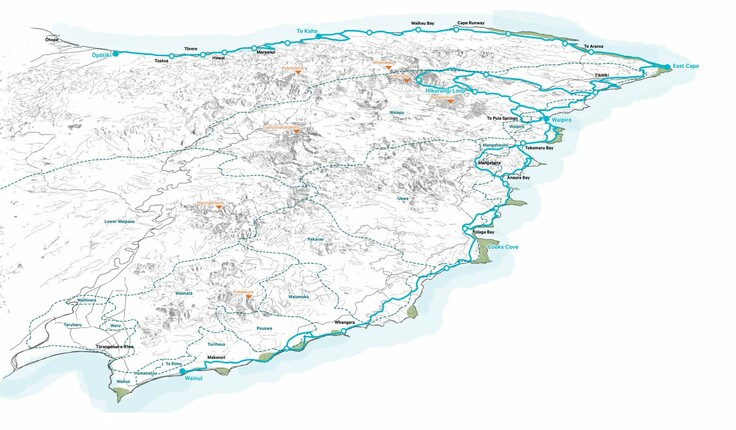
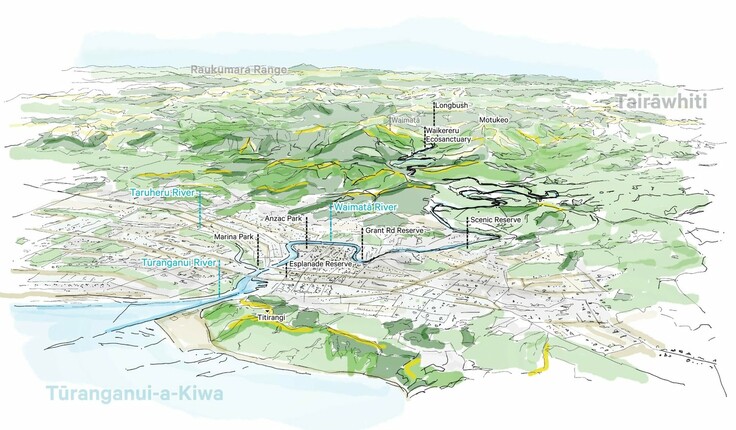
- This is going to keep coming at us and it’s not new for us. We have been locked in a cycle of response, recovery and rebuild for some time, every year in Tairāwhiti. Its urgent to innovate now.
- We need to tackle the underlying issues, what is in our realm of control; landuse, slash, reliable networks and we need big picture thinking and investment to tackle these as fundamentals.
- We need to use this ‘window’ to shift the thinking about how we manage our waterways our catchments, our whenua and what we see as ‘success’, what adds value.
- We don’t want to be resilient (and, btw, we already are) to ongoing cycles of response, recovery, rebuild with no vision of a better future.
- We need a vision that is based on our values, our place.
Our interest is, in a model that supports us, creates a bigger adaptive cycle where we continue to learn, adapt, innovate, are self-determined, to become even more ‘East Coast’.
It’s quite a shift in thinking. While titles never capture the full story, I think it’s useful to talk about this shift as adaptive regeneration in place (ARP- sorry, another acronym). This also means a shift to thinking about continuous improvement and learning; about what regeneration means in context, in place, and the actions that support it. There are no set-in stone solutions, however I see, and hear, some clear focus areas, of what ARP includes, needs to consider:
- A nature-based response that brings land, people and culture together. A way of thinking, that considers the primacy of the environment, supported by people and our (bi)culture. Not the other way around. He Taiao, He Tangata. Not surprisingly, this places water at the centre of any response. Underpinning this – continuing to learn and articulate an Aotearoa definition of landscape (and here I make particular reference to development of Te Tangi a te Manu, the New Zealand Landscape Architecture Assessment Guide), and how this relates to the concept of whenua and of catchment-based management, informed by a greater understanding of te mana o te wai and ki uta ki tai. A flood has no concept of cadastral lines or of city, town and country.
- Working across the broad to fine scale together (nested scales) assisted by quick, adaptive spatial tools, to understand both the problem and possible ideas; to not jump to solutions. An adaptive way of working that needs to be supported by a co design -planning – procurement-construction-management process.
- The question of how to regenerate, and what will regenerate, is ongoing. The focus on fixed solutions (and of rebuilding all that was) has significant flaws. To be clear, this is not a call to the adhoc or the anti- plan. It does mean, however, that any concept of a masterplan needs to be seen as a ‘living document’.
- The process, tools and deliverables need to be adaptive. What’s more important to determine, come back to, is the values and principles that will underpin this adaptive process; of how to uplift nature, culture and community together. Also of the layered questions, that keep a focus on the big picture: what regeneration means over time, space, at different scales, from different lens’, in this place and in response to this ‘current’ event.
- Understanding that flooding and destruction on this scale is revelatory in terms of nature, culture and community. Events bring to the surface and add another layer to existing social issues and a lens on how we are progressing as a bi cultural nation. On the one hand, we all now have a greater understanding of poverty on the East Coast and there have been points of prejudice and outstanding Te Tiriti matters made more visible. On the other, the unique treasures of the East Coast are there for all to see; the natural, coastal, productive and continuing cultural landscapes; the sequence of Pā and marae and taonga wharenui. Add to this, the collaboration, capability and spirit, wairua of its people. As an example, the iwi and hapu-based response has been nothing short of amazing, and this has strengthened connections to marae for mana whenua and the wider community.
- Just as in the immediate response, partnership is critical to an overall regenerative model and part of what we need to continue to learn, improve on. No doubt, its challenging. Shifts to support this include a broader client base, for example, Alliances that bring mana whenua, councils and NZTA Waka Kotahi together along with self-determined, local initiatives; projects led by runanga and other iwi entities and community organisations. Planning and project structures that bring landowners and private companies to the table are also critical.
- In a regenerative model ‘cycling’ quickly into the positive, what uplifts and supports wairua, what keeps pointing to the vision, is important. The positive adds much to the way we learn about regeneration and, in practice, helps to build support to continue it; interest and agency. We need to deliver the positive at the same time as we work on the gnarly, long-term issues. Nest the two together. Where it is ‘flood and slash safe’ to do so, it is not wasted effort or frivolous to look for the opportunity to improve the quality of our environment and peoples experience of it, how we care for it. This can happen alongside, and it helps keep us in good spirits, while we rebuild the ‘pipes’ and work out what to do with the slash.
- There is a need to continue learning about the planning, policy, procurement and investment structures that will support ARP; longer term shifts such as to the ETS and National Standards for forestry, economic evaluation models that provide for full accounting (regeneration merit) and the big changes proposed in the freshwater and coastal management plans for our regions that will help support regenerative landuse. At the same time, we can learn from, and adapt to place, more nimble and temporary planning and approval approaches to support regeneration- and these are needed to deal with the immediate threats of slash and sediment. We think there is a lot more innovation to come in this space, including what can be adapted from other parts of the world to this context.
- Manuhiri, people who can help from other places, are vital to the East Coast where they bring their best place based adaptive regenerative thinking (including funding and procurement models); rather than best practice from elsewhere, or a lens to look for opportunities where these don’t thread back to the wider vision for regeneration in this special place.
It’s time to think about the past, present and future, to innovate from traditional knowledge and to use technology that will strengthen Te Ao East Coast with leadership and regenerative thinking for the wider benefit of Aotearoa.
Share
10 Dec
Proposed replacement of the RMA: Planning Bill and Natural Environment Bill
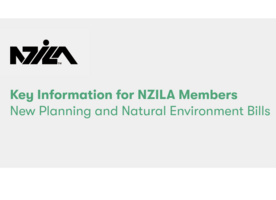
A message from the Environmental Legislation Working Group
On Tuesday this week, the Government released proposed bills to replace the Resource Management Act 1991. Reform of our planning …
03 Dec
Newly Registered Landscape Architects 2025
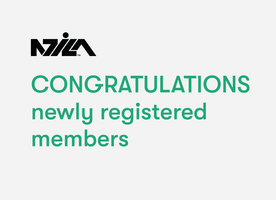
Celebrating professional achievement across Aotearoa The 2025 Registration process is now nearing completion, and we are delighted to acknowledge the …
02 Dec
2025 IFLA APR Newsletter
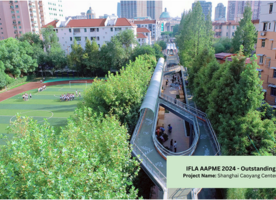
November Edition
2025 IFLA APR Newsletter: November Edition November brings exciting updates from across the region. We’re welcoming the new IFLA APR …
Events calendar
Full 2025 calendar